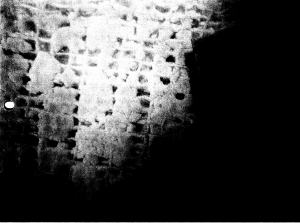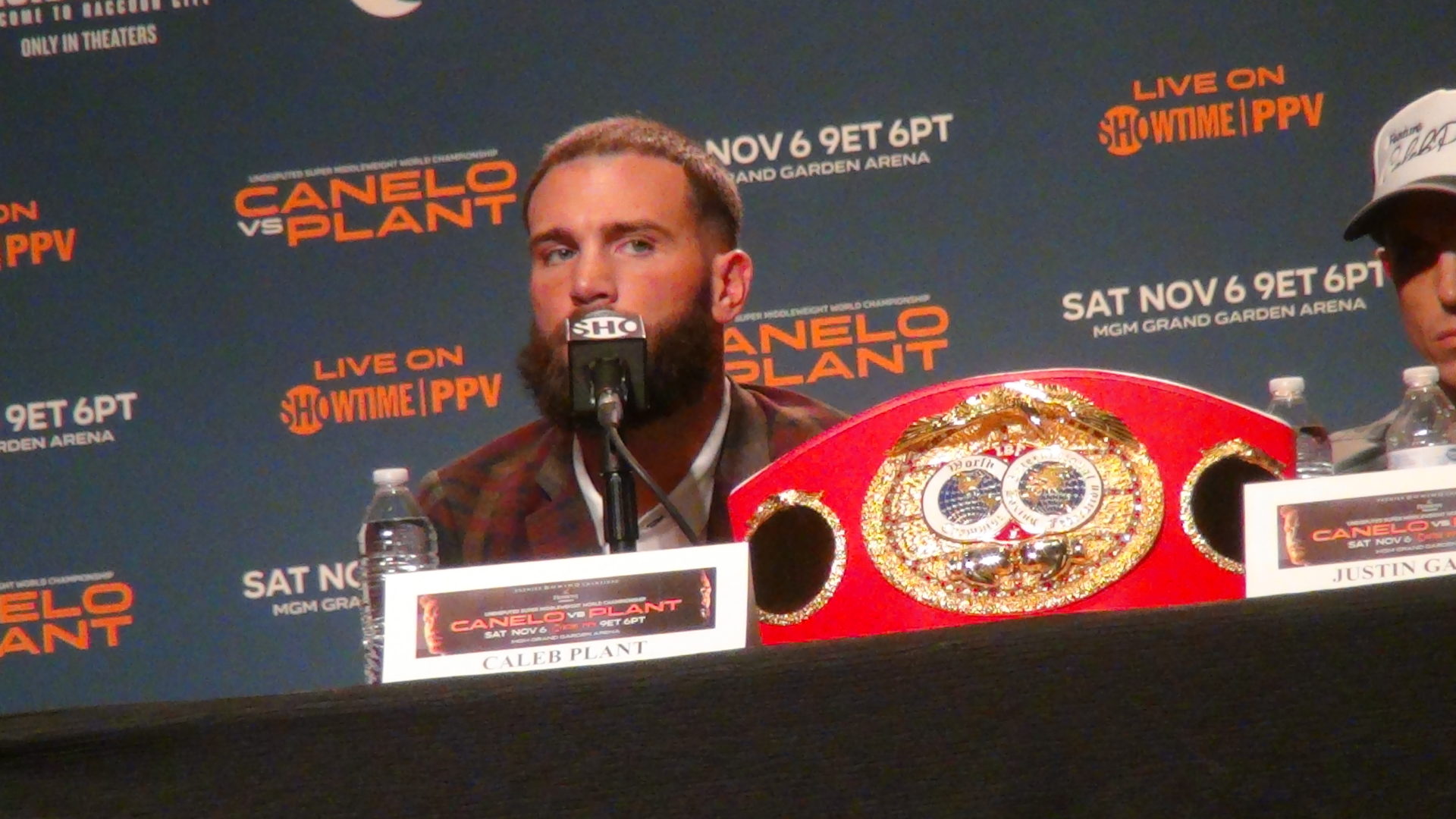
With all due apologies to T.S. Eliot and Carlos Acevedo, boxing is the cruelest art. But it is also, strictly speaking, a series of assaults and batteries— with the law suspended for the moment between two consenting adults who wish to prove a point.
As Antonio Margarito, suspended from boxing by the California State Athletic Commission, prepares now to face Manny Pacquiao in Texas, it seems worthwhile to spend a minute or two considering the law as it relates to boxing, and how it didn’t relate to Margarito and his trainer, Javier Capetillo. I say this because I’m still not entirely sure why at least Capetillo has not faced criminal charges. More specifically, assault with a deadly weapon.
Before his fight with “Sugar” Shane Mosley for the Welterweight Championship in California, Mosley’s trainer discovered what was later found by the California State Athletic Commission to be a “plaster-like substance” on the knuckle pads of both of Margarito’s hand wraps. The knuckle pads were seized by the Commission and Margarito’s hands were re-wrapped in time for him to be beaten to a pulp by Shane Mosley. No harm, no foul? Not at criminal law. If you shoot at someone and miss, the law doesn’t reward you with a free ride for bad aim. Attempt is a crime.
As a disclaimer, although I’ve passed the New York Bar I have not taken the California Bar and have no intention of doing so. But much of law reduces to Common Law, and despite some terminology differences and statute interpretation particular to each state, a general analysis is possible. So here we go.
The Law
Assault and battery are both tortious offenses (i.e., you can be sued for doing it if the other party experiences damages) and criminal offenses (i.e., the state can press charges against you for doing it). In some instances it can be both.
Within the consent of the boxers to not file suit, and the consent of the state to not press charges, are the agreed upon rules. Between the boxers this is contract, between the state and the boxers this is law. Which is to say, all that stands between boxers and lawsuits and jail time and fines are their contracts with each other and the rules of boxing. One contracts to fight another man under certain conditions (e.g., at a certain weight, in a certain size ring, wearing certain size gloves and under a certain set of rules). To go outside the contract in a big way (“a material breach”), is to lose the protection of the contract and, perhaps, the protection (or the suspension of the suspension) of the law.
Notable examples of boxers who have gone outside the rules and have been criminally punished are Luis Resto and his trainer, Panama Lewis, who both saw the inside of a prison for taking the stuffing out of Resto’s gloves in a bout with the once promising, but that night beaten and virtually blinded Billy Collins, Jr. ; and James “The Harlem Hammer” Butler, who, after losing a decision in 2001 punched his then celebrating opponent with a taped but gloveless fist. Occurring after the final bell, Butler was led out of the arena in handcuffs and charged in New York with felony assault to the second degree.
In both of these instances, the parties went outside both the contract and the rules in a manner sufficient to trigger both the ability of the injured party to sue and the state to press charges. Collins had agreed to fight Resto with certain ounce gloves. In ripping the stuffing out of the gloves, Lewis and Resto voided the contract and, in violating the rules in so egregious a way, lost the protection of the law and committed assault and battery, which in New York was charged as a type of “Assault” as well as possession of a deadly weapon—the gloves. “The Harlem Hammer” punched without gloves and outside the allotted time of the bout, no longer protected by contract or rules.
Both offenders in these cases caused damage to their opponents; generally, one must have damages capable of redress to sue. Because no one was struck or threatened with the “plaster-like” hardened fists and Mosley ultimately won the bout, there are no damages (except perhaps to Margarito’s reputation and a generalized damage to the sport of boxing) —thus no lawsuit.
But some further explanation of just what assault and battery means in a criminal context might be in order. Different states use the words differently, but California essentially follows the old Common Law form. Without getting into degrees and “aggravated” status, according to the California Penal Code Sect. 240. “An assault is an unlawful attempt, coupled with a present ability, to commit a violent injury on the person of another.” (emphasis added).
According to CPC Sect. 242. “A battery is any willful and unlawful use of force or violence upon the person of another.”
The classic definition of battery is “the use of force against another, resulting in harmful or offensive contact.”
Which is to say, generally, that assault is the attempt and battery is the actual contact. Or, germane to this discussion: you can assault someone without actually hitting him. And unlike in the lawsuit context, you need not have inflicted damage on another.
The last weapon in our legal arsenal for the moment regards just that, weapons and/or dangerous instrumentalities:
CPC 245. (a) (1) Any person who commits an assault upon the person of another with a deadly weapon or instrument other than a firearm or by any means of force likely to produce great bodily injury shall be punished by imprisonment in the state prison for two, three, or four years, or in a county jail for not exceeding one year, or by a fine not exceeding ten thousand dollars ($10,000), or by both the fine and imprisonment.
Arguably, outside of the protection of the law in the ring, a boxer’s fists alone might qualify under this statute for the increased penalty. But certainly, a set of brass knuckles would qualify under the statute as either/or. Having said that, I do not see much legal distinction as to impact between brass knuckles and plaster of paris knuckle pads in a boxing match. And remember, you don’t actually have to hit someone to have “assaulted” him.
And there it is—call it what you will, attempted battery or “assault with a deadly weapon.” Loading boxing gloves with “a plaster-like substance” in anticipation of their use in a boxing match would seem to qualify. The only thing that seemingly stood in the way of a criminal beating that night was Sugar Shane Mosley’s observant trainer and the time it would have taken to walk into the ring.
Proof
But of course, in the criminal context one must prove guilt beyond a reasonable doubt. Not any doubt, but a reasonable doubt. The Commission revocation hearing used the “clear and convincing evidence to a reasonable certainty” standard— which is more than preponderance of the evidence (i.e., 51%), and less than beyond a reasonable doubt (i.e., beyond the reasonable doubt of a reasonable man).
In addition, however, in the criminal context, generally, one must show intent (sometimes “recklessness” or “negligence” will do, but in “attempt crimes” intent is generally the touchstone). Intent in this matter would essentially mean that Margarito and/or his trainer knew that the hand wraps had been exposed to a hardening agent, or as the CSAS found, “a plaster-like substance,” and proceeded to go forward to fight.
The Defense
Not knowing is a defense. But just saying you “didn’t know” is not enough to dispense with intent—it is a question for the jury (or judge, if there is no jury) to decide. It is what is called “a question of fact.” The answer or decision is based upon the credibility of the accused and the surrounding evidence. In the case of Panama Lewis and Luis Resto the court found that despite their assertions—they had to have known. And again, they both went to prison in addition to being banned from boxing.
Hardened knuckle pads, however, are not the same as gloves with the stuffing ripped out. And more than a few reputable boxing trainers, including Freddie Roach, Emanuel Steward, and Nazeem Richardson—the trainer who actually discovered the hardened knuckle pads—have publicly stated that it would be possible for a trainer to place hardened pads within a boxer’s hand wraps without the boxer knowing it. It is also possible, because the knuckle pads aren’t necessarily prepared in front of the boxer (according to the CSAS Capetillo told conflicting stories about where he prepared the knuckle pads) that any treatment of the pads could not seen by the boxer.
That sound you just heard was reasonable doubt creeping in as to Margarito.
But having said that, the CSAS found Margarito to not be a credible witness. According to the Commission :
“…the Commission found Mr. Margarito’s claims that he was unaware of the foreign and illegal substance found in his fist wraps and that it was entirely the fault of his trainer, to not be credible. In short, by assuming no responsibility or knowledge of wrongdoing, Petitioner’s testimony at the hearing was evasive, inherently improbable, in most respects, and, in certain specific instances, disingenuous in the extreme.”
They may also have mocked his shoes.
But part of the Commission’s finding was based on their belief that an experienced professional boxer could not have not known that his hand wraps contained knuckle pads with a plaster-like substance on them. At least that part of the finding would seemingly become suspect when subjected to the expert trainer’s views.
Capetillo is, perhaps, another story. The Commission characterized his testimony as follows:
“Respondent testified that he was nervous and that he used the wrong knuckle pads in both of Margarito’s hand wraps. Respondent testified that the adulterated gauze pads must have been thrown into his trainer’s bag by another boxer during a training session at Respondent’s gym.”
“Respondent testified inconsistently as to when he prepared the knuckle pads used in wrapping Margarito’s hands stating both that the pads had been prepared in advance and also that they were prepared at Staples Center.”
The Commission then stated:
“Respondent testified that he made an innocent mistake and did not cheat but instead twice reached into his trainer’s bag and twice grabbed the wrong knuckle pad. Although the Commission does not find Respondent’s testimony on this issue to be credible even if Respondent’s acts were the result of a mistake such a mistake would still violate Commission Rule 323 and would still bring discredit to boxing pursuant to Rule 390.
Because of the serious physical consequences which could have resulted to the other boxer from the use of boxing gloves loaded with illegal knuckle pads, the appropriate penalty is revocation.”
The Commission is not alone in finding Capetillo less than credible. Manuel Steward stated:
“When I get in the dressing room before a fight, one of the first things I do is make two knuckle pads and put them on the table. I don’t put them in my bag. I leave them out on the table, and so does every other trainer I know of.
So, I have a hard time believing that Capetillo took the wrong knuckle pads out of his bag by mistake.”
The Evidence
And what did the California Commission find as to the knuckle pads? Upon physical examination:
“The thin gauze pads were determined, after examination by the Commission, to have been adulterated with a white plaster-like substance.”
And by laboratory analysis? The Commission states:
“One adulterated pad was sent to the California Department of Justice Forensic Laboratory in Sacramento where it was examined and would be processed for testing. The pad was photographed under 6x magnification. The photographs show a white flaky substance on the pad and within the interstices of the gauze itself.” (See photo above and think about what gauze looks like—white squares with nothing in them).
CALIFORNIA DEPARTMENT OF JUSTICE BUREAU OF FORENSIC SERVICES
SACRAMENTO CRIMINALISTICS LABORATORY
4949 Broadway, Room F-201 Sacramento, CA 95820
Phone No. (916) 227-3777 FAX No.• (916) 227-3776
PHYSICAL EVIDENCE EXAMINATION REPORT
Suspect: Margarita, Antonio; Capetillo, Javier Offense: None
Victim: State of California Offense Date: January 24, 2009
March 19,2009
SUMMARY
Calcium and sulfur, two elements found in plaster of Paris, were found on the submitted gauze pad
EVIDENCE
The following evidence was submitted to this laboratory by Athletic Inspector Che Guevara of the
California Department of Consumer Affairs on January 17,2009:
Item # 1 Description
gauze pad
EXAMINATION
The submitted gauze pad was examined using a stereomioroscope. A white solid material was seen
adhering to and between the gauze fibers. Calcium and sulfur were detected in samples of the white solid using an X-ray fluorescence [XRF] spectrometer. The elements calcium, sulfur and oxygen are found in plaster of Paris [calcium sulfate -CaS04J. These three elements are also found in substances’ other than plaster. Oxygen is not detectable by XRF. (CSAS, P.27-28, PDF)
Conclusion
So why again is at least Capetillo not being charged?
The California State Athletic Commission report, findings and briefs can be found here.
http://www.dca.ca.gov/csac/about_us/meetings/20100818_agenda.pdf




















